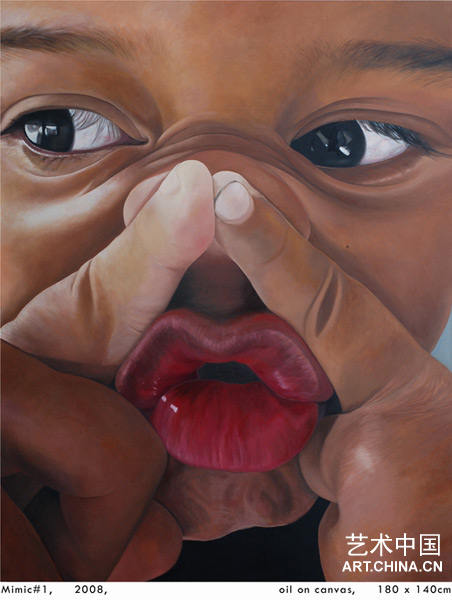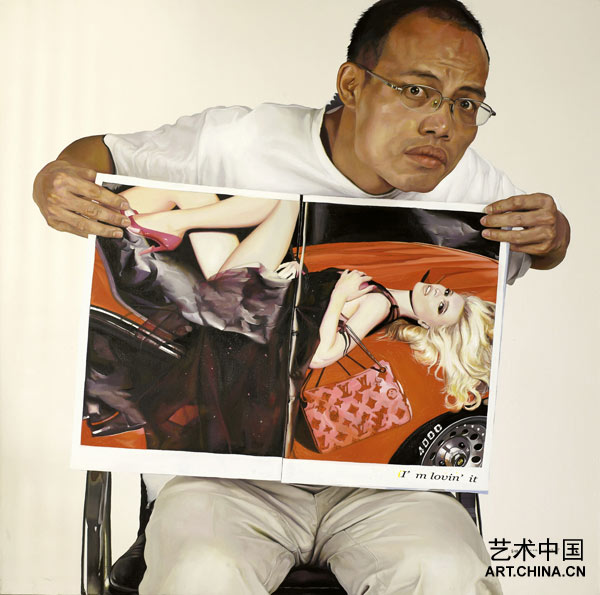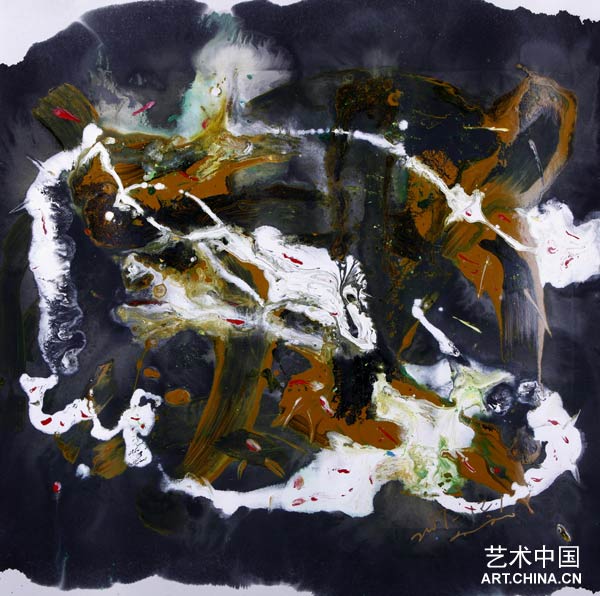|
2. The significance of the exhibition
The international art has been dominated by western style for centuries. the general perception within a larger context that holds the view that international art consists of only one substance, that being “western art”, and because of that, Asian art, no matter where in the world, just follows the same developmental trail, and has also a parallel art history . In the presentation of international exhibitions, Asian art has been paralleled with the development of European art and American art. However, this parallelism only reflects the general perception that international art is on the premise of western art. Also, the inclination in international exhibition also bases on the trend of Europe and America.
The process of forming and creating international art does not end with “art in the Western sense”. Fames of reference and conceptions in Europe and America are not reflected in the issues under consideration outside of Europe and America.
There is a reality to face that the most important part of the process of forming international art , which has been blatantly overlooked , is the Asian art. Since 19th century, the Asian art already had its own process of development, which did not simply copy or supplement the western art. While syncretizing the western art, Asian art also incorporates its own culture, making Asian art with the potential to be parallel with the art in Europe and America.
Therefore, based on the Asian local culture, the exhibition intends to explore the new visual languages. We honestly hope this activity can create a platform for Asian artists from different countries to exhibit their languages in their own cultural systems. Show the special witchery of eastern art..
 Mimic #1模仿者#1 Agus Cahaya Oil on Canvas布面油画 180 x 140 cm 2008
Mimic #1模仿者#1 Agus Cahaya Oil on Canvas布面油画 180 x 140 cm 2008
3. The explanation of the exhibition theme
Nowadays English has become the international language. People from different countries will speak English with distinct accents upon varied native language, pronunciation, tones or environment, which also reveals the Culture characteristics in different areas. So is the art. By perfectly referencing the western art, Asian art could definitely show native culture vividly.
We are going to communicate our viewpoint with the vigorous sound belonging to oriental; letting the whole world get the knowledge of our "quintessence"; using the charm of eastern art to make international art developed and getting “art with an accent” spreading both in our country and the world.
 中国艺术家肖旭 科技新贵
中国艺术家肖旭 科技新贵
4. introductions of the curator
Jim Supangkat
He was born in Ujung Pandang, a city in South of Sulawesi which in the past known as Makassar Harbour, in year 1948. He entered Faculty of Fine Art and Design, Bandung Institute of Technology, in 1970. Before he was graduated in 1975, he studied esthetics under noted philosopher, Dick Hartoko OSJ in the city of Yogyakarta, between 1974-1975. At the same time, followed informal study on esthetics at Faculty of Philosophy and Faculty of Literature, Gajah Mada University, Yogyakarta.
In 1975, with a group of artists from Yogyakarta and Bandung, Supangkat founded Indonesia New Art Movement (Gerakan Seni Rupa Baru Indonesia). The movement proclaimed the re-definition of the term “seni rupa” (“art,” in Indonesian langguage). In four years time, the movement actively organised exhibits in several cities. Most of the art works exhibited were installations. Debate on the movement’s priciples continued in nearly ten years after the movement was broken up in 1979. Still in 1979, Supangkat went to The Netherlands and followed a post-graduate course at Psychopolis Art Academy in The Hague, for one year.
. In 1980, he married a sculptures, Altje Ully Sumihar Hasudungan br. Panjaitan, and got two lovely daughters, Ardea Rhema Sikhar and Avanti Anggia Sarmaria. Besides working as artist, in early 1980’s, Supangkat gave lectures in several universities and art acadamies in Jakarta and Bogor. In 1982 he started working as journalist. In the beginning as an art editor but afterwards his career as journalist was widen towards many fields not related to art. Between 1984-1992 he worked with Tempo newsmagazine (banned by the government in 1994)
In 1987 Supangkat organised an art project, entitled Fantasy World in Supermarket, a collaborative work participated by 30 artists. The project, a 20 X 30 meters installation was build in form of a supermarket and was exhibited in Jakarta. Text put all around the installation was based on a study on displacement in Indonesian modern society. In 1989 he organised another art project, entitled The Silent World based on a study on AIDS and the writings done by AIDS victims. The project, participated by four artists, was exhibited in Jakarta, Perth and Hobart.
In 1992 Supangkat decided to change course. Aware of the need of proper art institution and the profession of a curator in Indonesia, he stopped working as journalist, lecturer, even as artist. With several artists, art critics and a wealthy art collector, he founded Jakarta Institute of Art (JIA) in 1991, which was planned to be an Art Centre for introducing Indonesian art to the international art world. He became the curator of the institute. However, he quit in 1993 due to difference of opinion with the financiers. Supangkat decided to continue working as curator and became an independent curator.
As an independent curator he was involved in curating international exhibits, among others, Asian Modernism, and Contemporary Art of The Non-Aligned Countries. At the time working as a curator, he had written several books, among others, “Titik Sambung, Barli Dalam Wacana Seni Lukis Indonesia” (on development of the art of painting in Indonesia in the colonial time) “Lukisan Patung dan Grafis G. Sidharta”, (on an Indonesian Modernist, who had opened contemporary art discourse in Indonesia). At time he is finishing a book entitled, “Retrospeksi Seni Rupa Indonesia”, a critical view on the development of art in Indonesia, since the eighteen century.
 中国艺术家 钱铃戈 Qian Lingge 2007.12.1 纸本混合媒介 Mixed media on paper 67×67cm 2007年
中国艺术家 钱铃戈 Qian Lingge 2007.12.1 纸本混合媒介 Mixed media on paper 67×67cm 2007年
|

